Hiroshima and Miyajima are a perfect combination for those seeking history, reflection, and natural beauty all in one trip. In this article, I'll tell you how I managed to visit these two destinations in two days, what to see, and how to plan your visit.
Hiroshima stands out for its past, with the Peace Memorial Park and the Atomic Bomb Dome as symbols of resilience and hope. While just a few minutes away by ferry, Miyajima offers a different kind of experience: a sacred island with ancient temples, picture-postcard landscapes, and the famous floating torii that lends a certain air of mysticism to the environment.
Together, these two gems of southern Japan provide a cultural and emotional experience that is hard to forget.
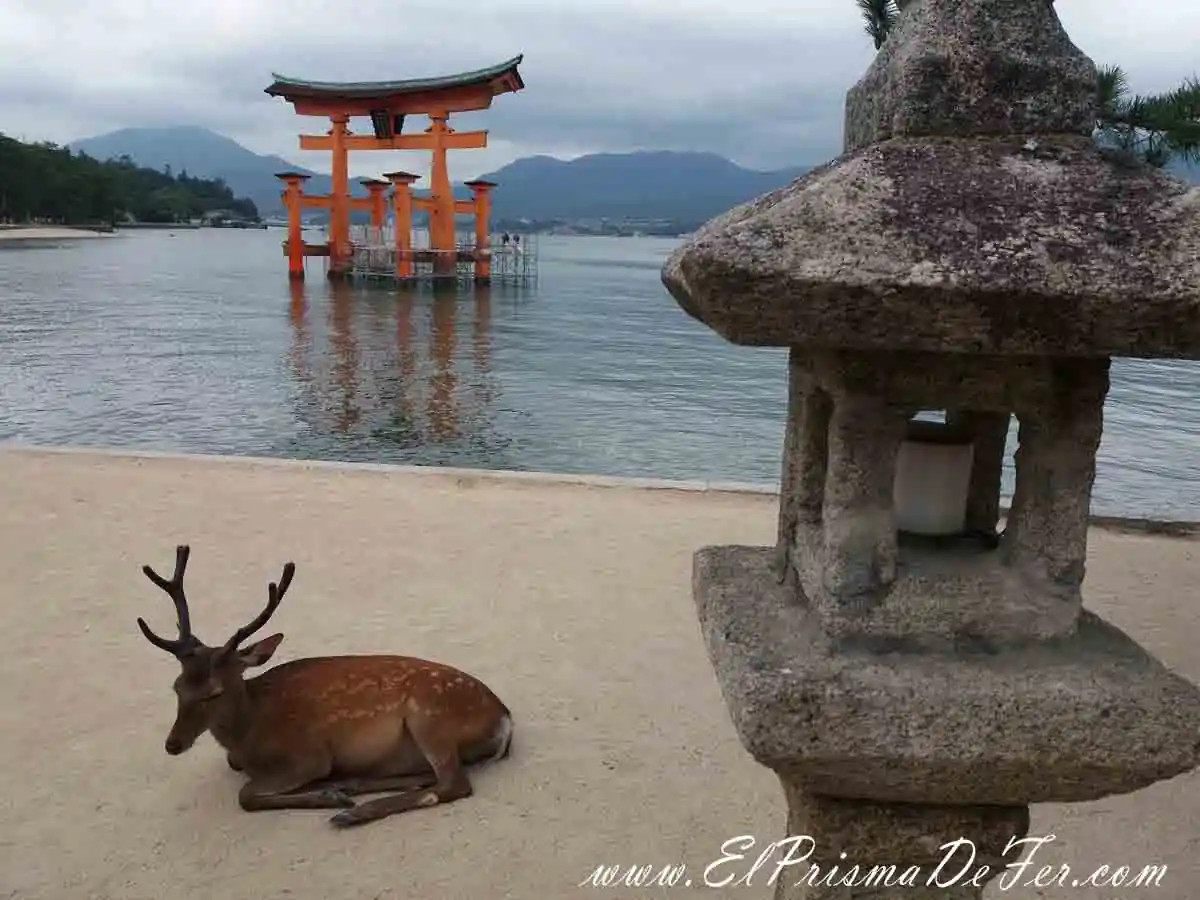


This article is part of my travel itinerary through Japan and South Korea.
Table of Contents
Hiroshima
I arrived in Hiroshima after Visit the city of Okayama and its castleSince I was planning to spend the night on Miyajima Island, I decided to leave my things in the lockers at the train station and explore the city on foot.
A little history about Hiroshima
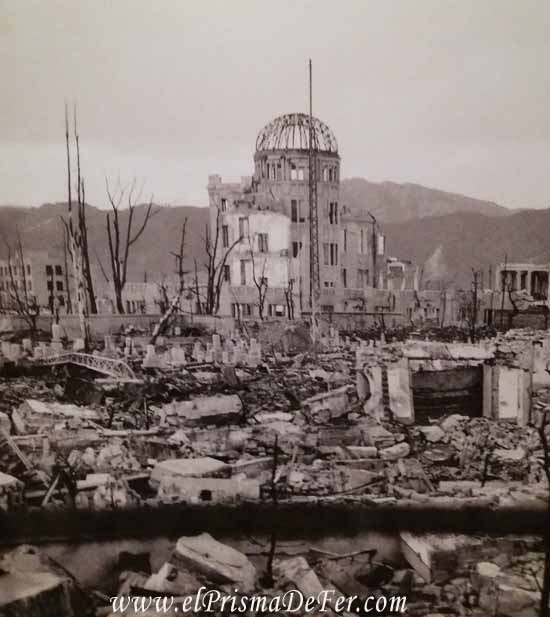
Hiroshima is sadly known for being the first city in the world to suffer a nuclear attackOn August 6, 1945, during World War II, the United States dropped an atomic bomb on the city, causing massive destruction and the deaths of more than 140,000 people. The explosion not only devastated the city physically, but also left a profound mark on humanity's collective memory.
Despite this, Hiroshima It rose from its ashes as a symbol of peace and reconstruction. Today, the Peace Memorial Park, the Atomic Bomb Dome (one of the few structures left standing) and the Peace Museum They offer a space for reflection, tribute, and learning about the consequences of war and the importance of preventing such a thing from happening again.
Impressions of Hiroshima
Leaving aside the symbolic value of walking through a city that was devastated by an atomic bomb just decades ago, and then completely rebuilt—a feat worthy of the Japanese—Hiroshima didn't appeal to me.
Strictly speaking about architecture, I found the city to be devoid of personality, with uniform, monotonous buildings throughout. I didn't find anything that caught my attention in the few hours I walked around. It's far from having the vibe we find in Tokyo or Kyoto, for example.

Don't miss the article I wrote about My visit to Tokyo, the city of my dreams
The city's stronghold, and the main reason to visit, is the Peace Memorial Park and Museum. A few hours are enough to explore everything, including the Castle (rebuilt after the bomb) and the only building left standing after the explosion, the Bomb Dome.
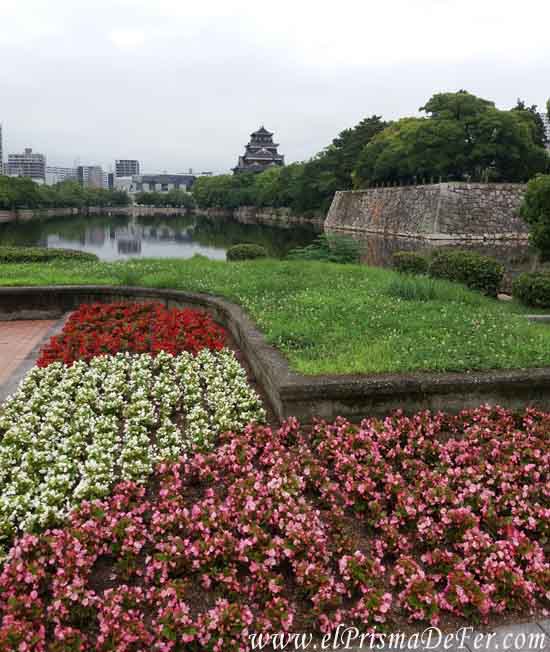
Hiroshima and Miyajima Attractions Map
What to do in Hiroshima
So, based on the few hours I spent in Hiroshima, what I can recommend for you to visit is:
Peace Memorial Park
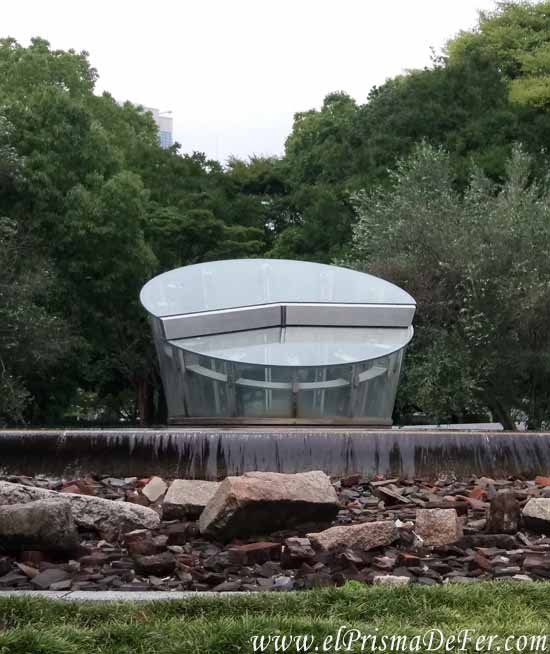
It's the emotional heart of the city and where they'll spend the most time. Inside the park, you can visit:
- Atomic Bomb Dome: The only structure left standing after the destruction. It remains as a symbol of memory and a call for world peace.
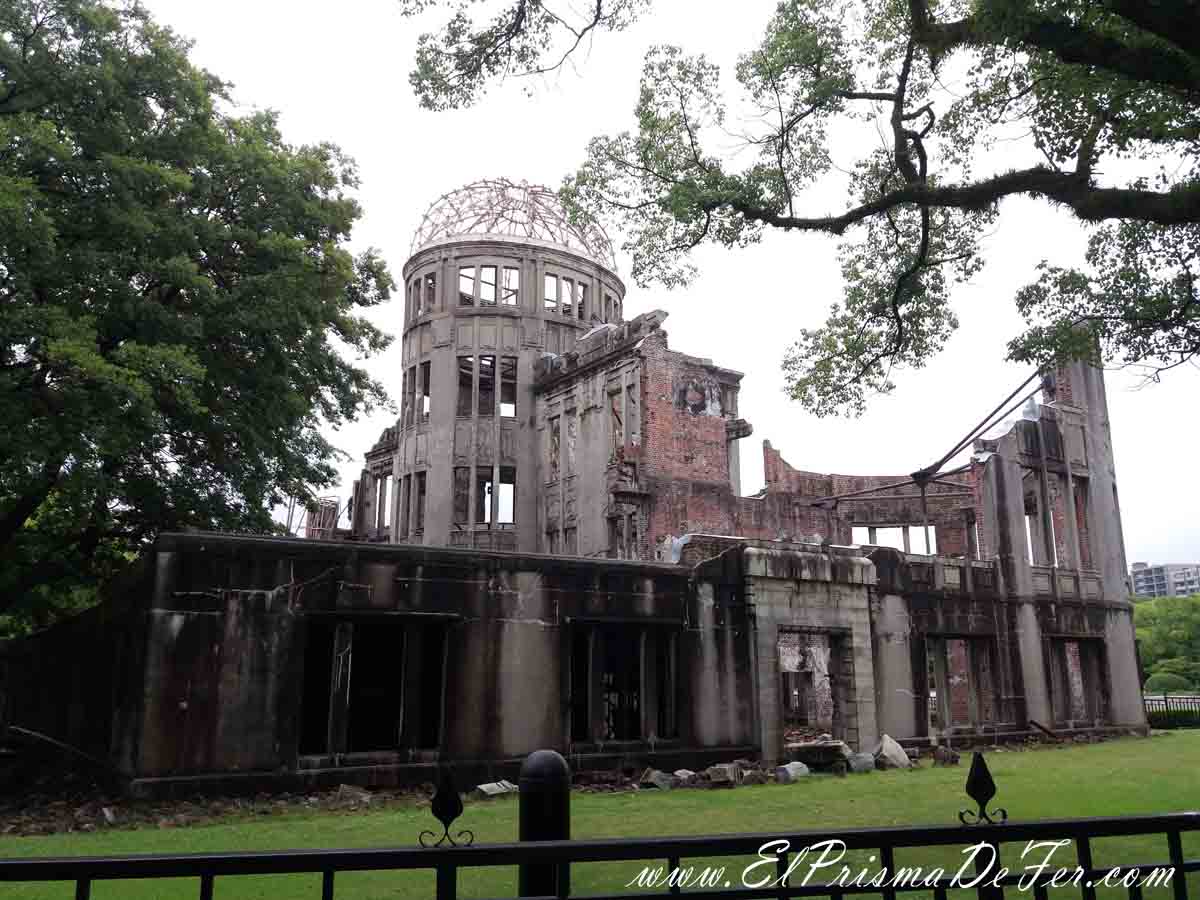
- Cenotaph of the Victims: a stone arch that protects the names of all the deceased, with the inscription: “Rest in peace, the mistake will never be repeated.”
- Flame of Peace: It has been burning continuously since 1964, and will only be extinguished when the world is freed from nuclear weapons.
- Children's Peace Monument: Inspired by Sadako Sasaki, a girl who died from radiation, and who folded a thousand paper cranes in the hope of being cured.
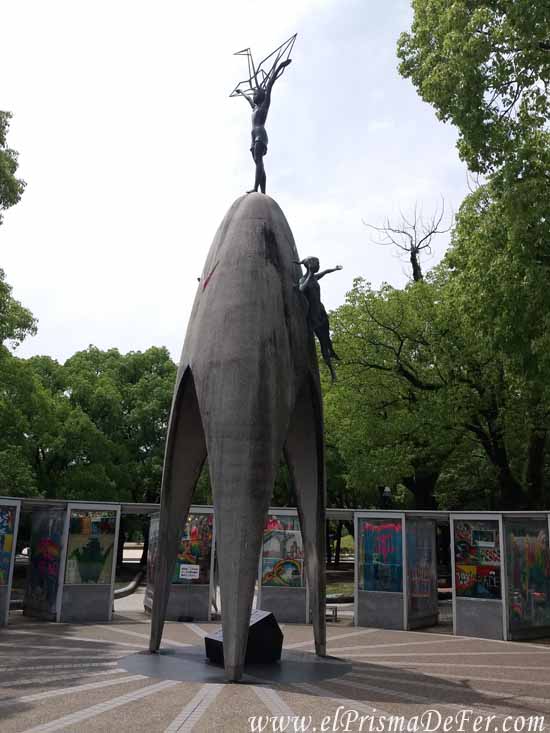
- Peace Bell: can be touched by visitors, sending a message of harmony that resonates throughout the park.
- Peace Memorial Museum: It offers a moving and educational look at the effects of the atomic bomb, with personal objects, testimonies, and historical records. It was one of the saddest things I saw. Especially seeing the children's drawings, showing the consequences of the explosion and radiation from their perspective... that was hard.
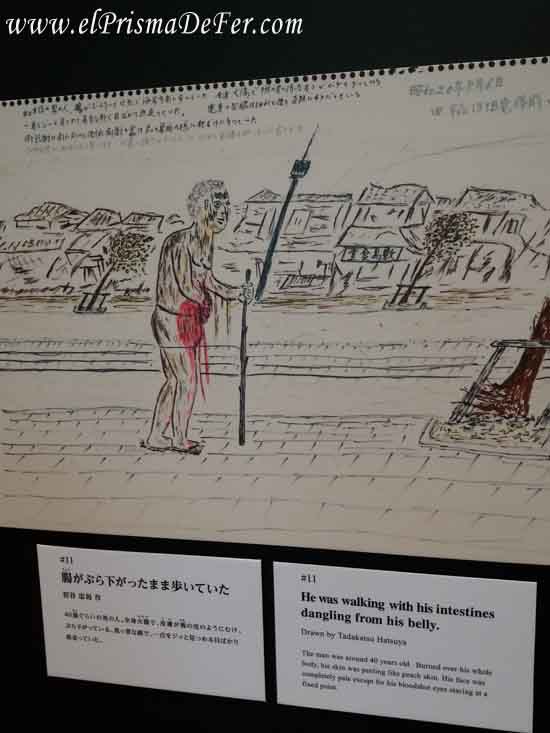
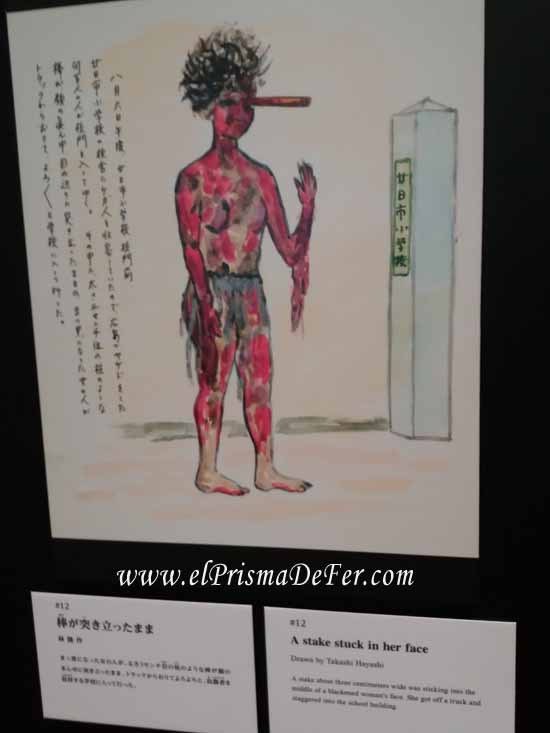
The Admission to the Museum is 200 yen for adultsYou can buy tickets from the official website of the Museum
Hiroshima Castle
It's one of the castles that caught my attention the least in Japan, considering I'd previously seen Himeji and Matsumoto Castles. Originally built in the 1590s, the castle was destroyed by the atomic bombing in 1945 and rebuilt in 1958.
It currently serves as a museum of Hiroshima's pre-World War II history.

To learn more about this and other castles in Japan, you can read the article I wrote about The Castle Route
Shukkeien Gardens
There are traditional Japanese gardens near the train station.
Miyajima Island Tour
Famous for the floating torii of the sanctuary ItsukushimaJust 45 minutes from Hiroshima by ferry (more on this option below)
How to get to Hiroshima
Hiroshima is well connected to other cities by train and bus. The most common routes:
By train (Shinkansen) from Osaka or Kyoto
- Shinkansen Sanyo (Sakura or Hikari)
- From Osaka: approx. 1h30
- From Kyoto: approx. 2 hours.
- Covered by the JR Pass

You can read other articles I wrote about My visit to Osaka, a city that disappointed me a little., already Kyoto, the capital of Japanese culture.
By train from Tokyo
- Tokaido + Sanyo Shinkansen
- Nozomi: 4 hours (NOT included in JR Pass)
- Hikari + Sakura: 5 hours (Yes, it is included)
By bus from cities like Osaka or Fukuoka
- There are night and day buses. They're cheaper but take much longer (approximately 5 to 10 hours).
Where to stay in Hiroshima
As I mentioned earlier, I didn't stay in the city; I only spent part of the day visiting the Castle, Memorial Park, and the Museum. But if I had to spend a night in Hiroshima, I would definitely stay in the area. close to the train station or on the way to the Park.
Is Hiroshima worth visiting?
Mmm, it depends. If you're nearby and want to spend half a day, or maybe just passing through another city, yes, it's not a bad idea to include it to get to know it. But I'd rule it out if I had to come from far away just to see Hiroshima.
How to get from Hiroshima to Miyajima Island
From the Hiroshima train station, you have to take the JR Sanyo Line train, until Miyajimaguchi Station (about 30 min).
From Miyajimaguchi, you have to walk a few minutes to the port and there take the ferry to Miyajima Island (10 minutes).
While it is easy to tour Hiroshima and Miyajima on your own, it is also possible Hire a private tour that will take you to visit everything

Miyajima Island
Miyajima, officially called Itsukushima, is a small island located in Hiroshima Bay and one of Japan's most magical destinations. Its main attraction is the famous floating torii of the Itsukushima Shrine, which appears to emerge from the water when the tide is high.
Unlike the few hours in Hiroshima, I felt a stronger connection on Miyajima. Here I would spend the night in some of the best accommodations I'd ever stayed in all of Japan, and I would have an epic moment with the imposing torii, alone, at night, and under torrential rain.
What is there to do in Miyajima?
Miyajima Island is mostly mountainous, full of hiking trails and temples to visit. Some of the activities we can do on Miyajima Island include:
Stroll through the traditional streets
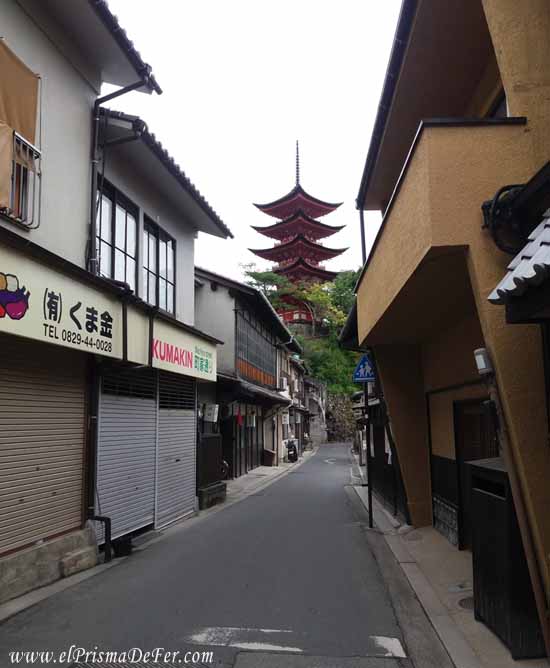
He The center of the island has wooden houses, craft shops and street food stalls where you can try some traditional sweets. It's relatively small, so it's easy to navigate.
Visit Itsukushima Shrine with the floating torii
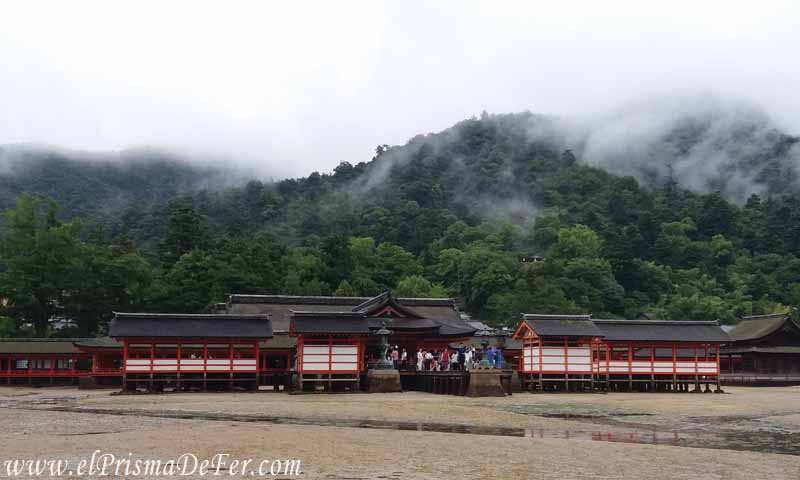
Passing the town, we find more clearings, with nature, free deer (like the ones we see in Nara) and we come across One of the jewels of Miyajima, the Itsukushima Shrine, where the floating torii is located.
It was already nighttime, and even though it was raining quite heavily, I decided to approach the famous torii anyway. It was lit up and looked incredible in the water. Without thinking twice, I took off my shoes, rolled up my pants, and waded into the sea until I was right in front of it. There was hardly anyone there, and that moment, alone, in silence, under the rain, was one of the most special of my trip to Japan.
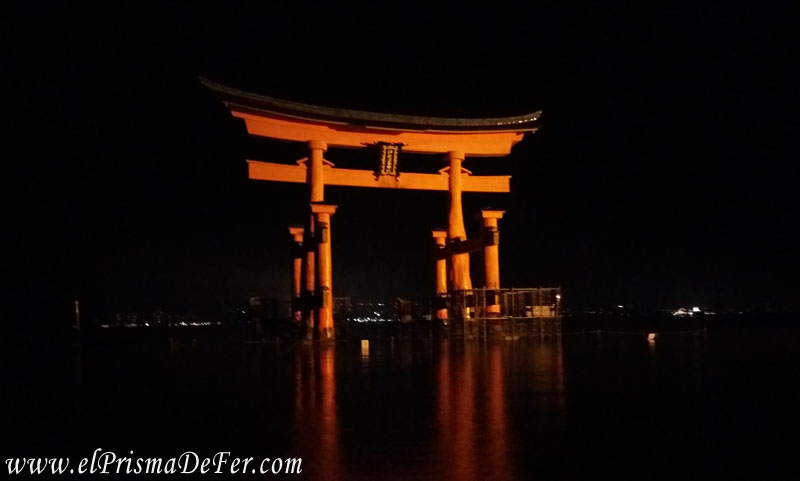
I was unfortunate enough to visit just as it was being renovated. For years, the torii was partially covered by scaffolding and construction materials. Although it remains imposing, I know it would have been even more impressive to see it completely clear. I hope it's fully restored by the time you visit.
In addition to Itsukushima, there is the Daisho-in (one of the most important in the area) and other spiritual corners that are worth discovering.
See the deer in the wild
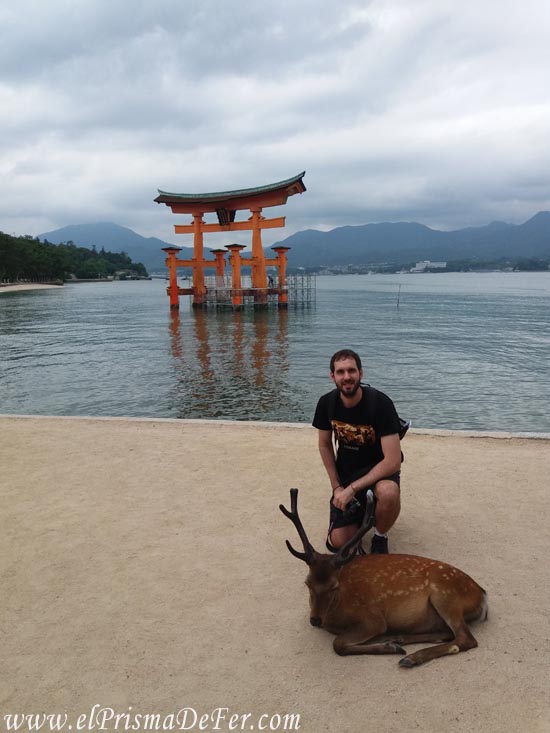
Just like in Nara, in Miyajima the deer roam free and coexist peacefully with tourists, giving us postcards as souvenirs.
Enjoy the beach and the tranquility
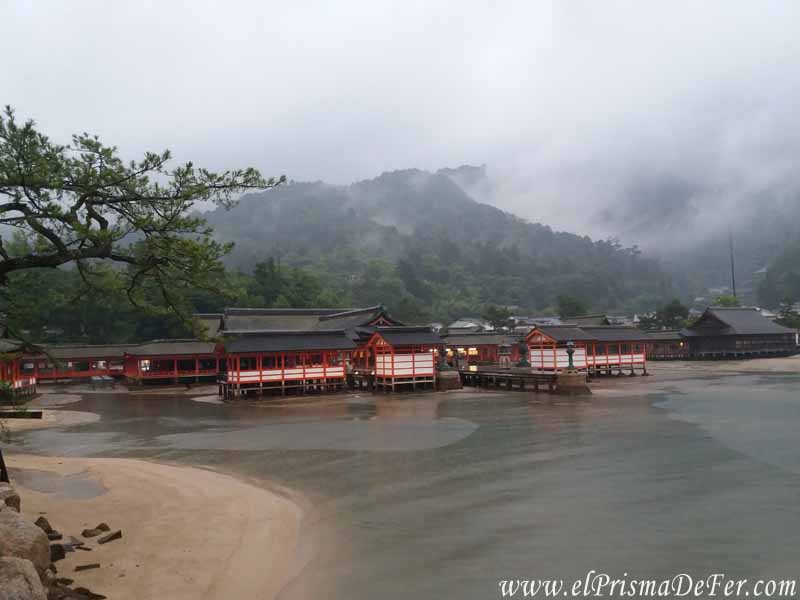
In summer, there are small beaches where you can relax away from the urban hustle and bustle. I didn't have the chance because the weather wasn't good, but if you have better luck, why not?
Climb Mount Misen
Another of the activities I enjoyed most on Miyajima was climbing Mount Misen. I love trekking, and the island offers great opportunities for doing so. You can do it by hiking trails or taking a cable car.
He Mount Misen It is the highest point on Miyajima, at 535 meters above sea level, and one of the most sacred places on the island.

If you like hiking, don't miss the article I wrote about it. walk along a section of the Nakasendo Trail.
The trekking combines nature, spirituality, and incredible views of the Seto Inland Sea.
There is three main trekking routes to reach the top:
- Momijidani Route (1.5 hours approx.): The shortest but also steepest. It starts near Momijidani Park and passes through a beautiful forest of maple trees that turn red in autumn.
- Daisho-in Route (1.5 – 2 h): Considered the most scenic and varied. It passes by temples, Buddhist statues, and viewpoints. Highly recommended if you want to combine culture and scenery.
- Omoto Route (approx. 2 hours): Less traveled, ideal for those seeking tranquility. It starts in the Omoto Park area and runs through a wilder area.
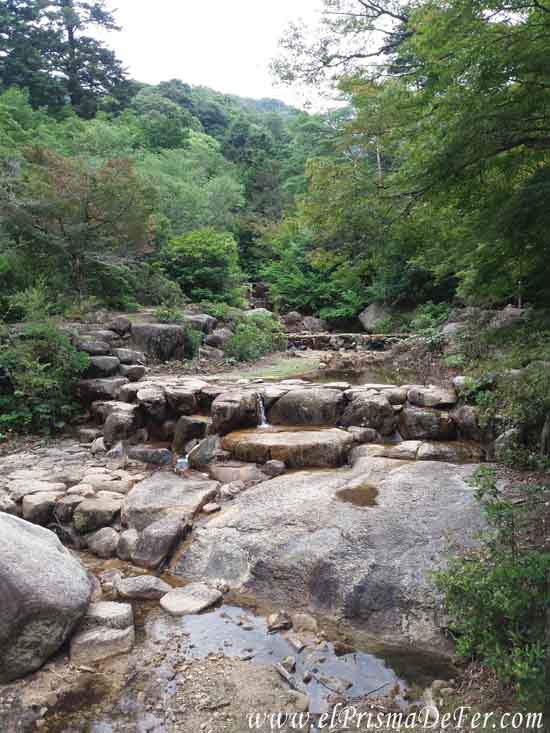
At the summit we can find a panoramic observatory with incredible views of the neighboring islands, the Reikado temple, where a sacred flame burns and several giant rock formations, surrounded by forests, which give the place a very special atmosphere.
Tip: You can go up a trail and then go down another one, if you don't want to repeat.
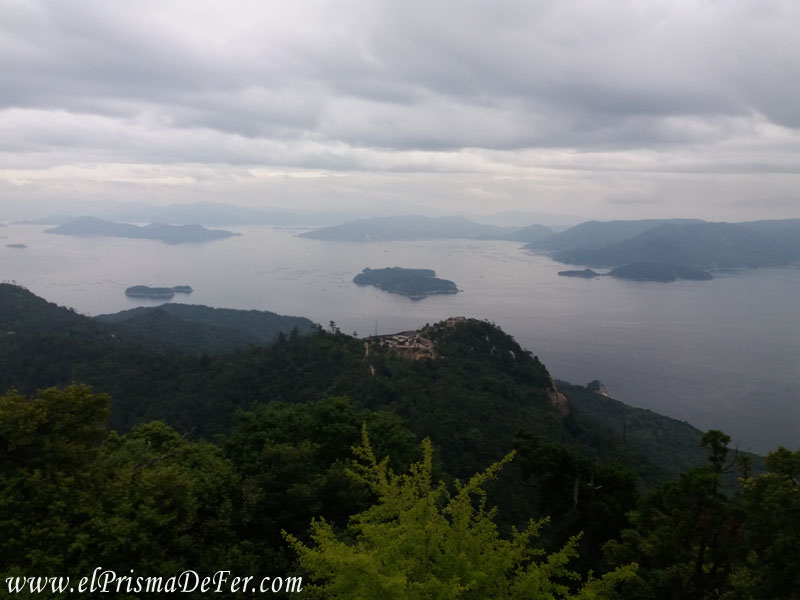
Option with cable car
If you don't feel like or don't have time to walk all the way up, you can take the ropeway to near the summit and then walk about 30 minutes further along a well-marked trail to the observatory.
Where to stay in Miyajima?
Although many people Visit Miyajima on a day trip from HiroshimaStaying a night on the island has its charm, especially when the tourists leave and the island is almost empty.
In the small center and surrounding areas we can find:
- Traditional Ryokan: There are several typical Japanese accommodations where you can sleep on futons and get the full experience. I stayed at the Miyajima Guest House Mikuniya And it was one of the best accommodations I've stayed at in all of Japan. I rarely recommend a hotel so highly, but this one deserves it.
- Hotels and hostels: There are also more affordable and modern options, both on the island and on the coast of Miyajimaguchi (the town from which the ferry departs).
The advantage of sleeping on the island is that it allows you to see the illuminated torii at night, a magical moment that few tourists enjoy if they only spend the day.
What is the best time to go?
It is similar to the rest of Japan.
- Spring (March to May): Very popular for its cherry blossoms. Pleasant climate and beautiful scenery.
- Autumn (October and November): Ideal for seeing the trees tinged with red and orange. Mild temperatures and spectacular views from Mount Misen.
- Summer: Hot and rainy, but a good time if you want to enjoy the sea or outdoor activities.
- Winter: Quiet and not so crowded with tourists, but with cooler temperatures.
Is Miyajima worth going to?
Yes Yes Yes! Just as I said I wouldn't go to Hiroshima unless it was just a passing visit, I would definitely come to Miyajima.
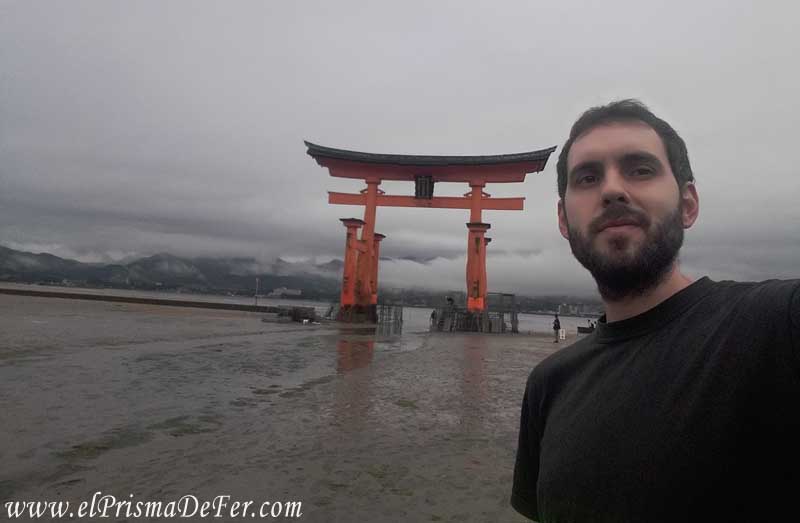
It seems to me a place full of spirituality, temperance, and nature. Not only will you get to know an icon of Japan, the floating torii, but you can also complete the rest of the day with trekking or other outdoor activities. And if you spend the night in a Ryokan, even better.
That's all for today's article. If you have any comments, please feel free to leave them below.
Thanks for your time! And see you in the next story.
